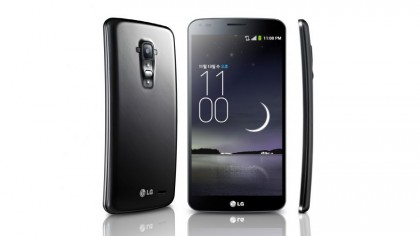The battery research that could change your phone, and the world
Has it run out of juice?
The idea was that piezoelectric films could be placed underneath each key of a keyboard or keypad, allowing it to generate a small amount of charge each time a key is pressed.
When we wrote about it in 2011 it was only able to extend the battery life of a laptop by around 10 percent but it was thought that eventually it would be able to charge devices a substantial amount.
We got in touch with Dr. Madhu Bhaskaran, co-leader of the research group, to find out what's going on with it and the news is a lot better than for M2E. The technology is still being developed and this is being done in tandem with work on flexible electronics.

The flexible electronics research is promising in itself, as it could go way beyond the likes of the Samsung Galaxy Round and LG G Flex and lead to devices which can be stretched, screwed up and are virtually unbreakable.
Not only that, but it also ties into the piezoelectrics research, as according to Dr. Bhaskaran it could be possible to combine piezoelectrics and flexible substrates, which would provide a relatively easy way to bend the piezoelectric material in order to generate electrical energy.
The bad news is that there's still a decade or more of work to be done before the technology makes it into consumer products according to Dr. Bhaskaran.
Chance of it happening: Reasonable, but we'll be waiting a long time for it.
Sign up for breaking news, reviews, opinion, top tech deals, and more.
True all-day batteries
You might think that your current smartphone has a battery that lasts all day, but try using it non-stop and we'd wager it will conk out long before nightfall.
That may not always be the case though. Back in 2011, Texas Instruments claimed to be working on a chip that could offer 'true all day computing' and the company planned to release it in 2013.
Here we are in 2014 and our phones are still dying alarmingly quickly and the chip that Texas Instruments was talking about is nowhere to be seen.

So what happened? Well the most recent smartphone chipset by Texas Instruments is the OMAP 5. That was originally due to hit the market in 2012 but it ultimately wasn't available until 2013. The delay to that could have caused a hold-up to its successor, which was to be the chip Texas Instruments was making its battery life claims over.
So will we see the OMAP 6 (or whatever it was to be called) this year instead? Unfortunately it doesn't look likely. Towards the end of 2011 it emerged that Texas Instruments was trying to sell its OMAP division.
According to sources who spoke with SemiAccurate, the attempts to find a buyer failed as OMAP is so tied up in the rest of the business that selling it without harming other divisions was impossible.
So Texas Instruments is still theoretically able to work on new OMAP chipsets, but it doesn't seem very interested in doing so. In September 2012 the company announced that it planned to wind down its operations in smartphone and tablet oriented OMAP chips and focus instead on embedded applications, such as automotive, industrial and robotics.
In November 2012 1700 jobs were cut as part of that shift and our hopes for OMAP 6 were dashed. While it's not impossible that Texas Instruments will return to the field of mobile chipsets, for now we'll just have to hope someone else can deliver on its battery boosting promise.
Other manufacturers are already working on it and in fact Samsung made a similar claim in 2012, stating that its batteries would last from when you get up to when you go to bed with average to moderately heavy use. The company has largely delivered on that, but heavy use throughout the day would still see your power pack die.
James is a freelance phones, tablets and wearables writer and sub-editor at TechRadar. He has a love for everything ‘smart’, from watches to lights, and can often be found arguing with AI assistants or drowning in the latest apps. James also contributes to 3G.co.uk, 4G.co.uk and 5G.co.uk and has written for T3, Digital Camera World, Clarity Media and others, with work on the web, in print and on TV.